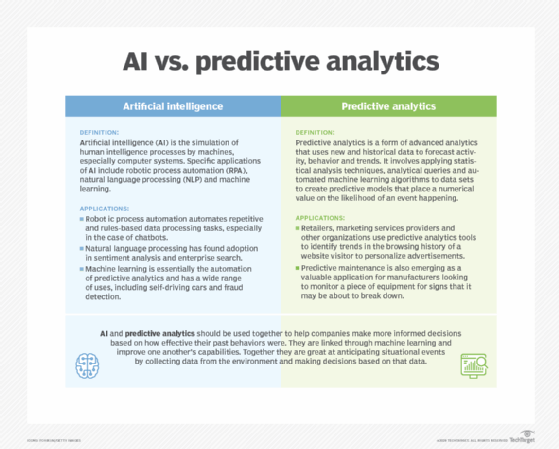What is social media analytics?
Social media analytics is the process of collecting and analyzing audience data shared on social networks to improve an organization's strategic business decisions.
Social media can benefit businesses by helping marketers spot consumer behavior trends relevant to a business's industry and impactful on the success of marketing efforts.
Social media analytics also provide the data to quantify the return on investment (ROI) of a campaign based on the traffic gained from social media channels.
Marketers can analyze how different social platforms like Facebook, LinkedIn and X (formerly Twitter) perform and determine -- and determine which messaging and topics in specific posts resonated best with a target audience.
Advanced social media analytics tools now incorporate artificial intelligence (AI) and machine learning (ML), enabling real-time data processing, predictive insights and automated reporting.
What are the use cases of social media analytics?
Social media analysis platforms can track and analyze a range of data and interactions used in a variety of social media marketing use cases.
Measure the ROI of social media marketing efforts
ROI is the main goal for any social media post that users might like, retweet or share.
To determine social media ROI, marketers must first establish a benchmark and then be able to measure key performance indicators (KPIs) against that benchmark over time. Analysis of those metrics will reveal tweaks marketers can make to improve the performance of a campaign and overall ROI.
Hootsuite, a social media management platform vendor, found in a recent study that 85% of organizations that began measuring social media data in their analytics tools could show ROI for those efforts accurately.
To accommodate analysis, organizations can add a tracking pixel or Google Analytics UTM parameter to any links used in social media posts or ads. Resulting data will show any conversions that came from social media marketing; this can prompt retargeting campaigns for visitors who didn't convert.
Emerging tools now allow marketers to measure ROI beyond clicks and impressions, incorporating deeper insights such as lifetime customer value and brand equity.
Improve strategic decision-making
Social media analytics can improve a marketing team's ability to understand what social media strategies are working or ineffective.
Analytical results can also provide insight useful for making business decisions about other important areas not associated with marketing campaigns.
Social listening tools collect useful insight about an audience and competitors from social media data being posted on various social media networks like LinkedIn and Facebook. Demographic information about the audience gleaned from such tools can be an important consideration in efforts to tune marketing efforts and build brand awareness.

Social media analytics tools work in real time, helping brands quickly pivot their messaging to stay relevant to consumer interests.
Track the efficiency of marketing teams
Most organizations strive to streamline workflows and enhance employee productivity. Here, social media analytics can play a role.
In addition to the KPIs for your social media content, you can also measure service metrics like response time and customer sentiment.
Showing the chief marketing officer areas where workflows can be automated and resources redirected to strategic activities that directly impact revenue can positively influence budgets and approvals for future campaigns.
Enhance customer experience
Customer experience (CX) is increasingly tied to social media interactions. Social media analytics tools can track sentiment and engagement levels, helping organizations tailor responses and improve CX. Additionally, real-time monitoring allows brands to resolve customer issues promptly, increasing loyalty and satisfaction.
What metrics should be tracked with social media analytics?
There are six general types of social media metrics that should be tracked.
1. Performance metrics
Measuring the performance of social media marketing efforts is critical to understanding where strategic efforts are working and where improvement is needed.
Key performance metrics to track include the following:
- Interactions across platforms and over time to determine if the posted content is properly engaging the audience.
- Engagement rate, which combines likes, comments, and shares as a measure of audience interaction.
- Reach and impressions, which indicate how widely your content is seen across platforms.
- Whether the number of followers is increasing over time to verify consistent progress across platforms.
- Click-through rate for link clicks on posts to see if they're properly driving traffic from social media channels.
2. Audience analytics
It's important to clearly understand and define the target audience, as it is the most important element of a social media strategy. Understanding the audience can help companies produce content targeted at what customers want and are looking for.
In the past, audience data was difficult to measure as it was scattered across multiple social media platforms. But with analytics tools, marketers can analyze data across platforms to better understand audience demographics, interests and behaviors. AI-enabled tools can even help predict customer behavior. They can also study how an audience changes over time.
The better targeted the content is, the less advertising will cost and the more cost-per-click of ads can be optimized. Enhanced audience analytics tools now integrate psychographic data, such as personality traits and values, to refine customer profiles further.
3. Competitor analytics
To obtain a full understanding of performance metrics, it's necessary to look at the metrics through a competitive lens. How do outcomes compare to competitors' performance? Social media analytics tools can answer this question, delivering a head-to-head analysis of relative effectiveness and insight to determine what can be improved.
Most modern tools that include AI capabilities can benchmark competitor performance by industry; this can be useful for initial goal setting on social media efforts.
4. Paid social analytics
Ad spending is serious business. If targeting and content are off, it can be an expensive proposition. More advanced analytics tools can often predict which content is most likely to perform well.
An all-in-one platform is optimal for tracking performance across all social media accounts, such as X analytics, paid Facebook posts or LinkedIn ads. Important metrics to track include the following:
- Total number of active ads.
- Total ad spend.
- Total clicks.
- Click-through rate.
- Cost per click.
- Cost per engagement.
- Cost per action.
- Cost per purchase.
These metrics will indicate where each dollar spent is going and how much return is coming from social media efforts. They can also be compared against competitor spending to ensure that spending is aligned and to reveal strategic opportunities where greater brand awareness and market share might be attainable.
5. Influencer analytics
To gain an advantage in a competitive space, many social media marketers will collaborate with social influencers as part of their marketing campaigns. To maximize such partnerships, it's necessary to measure key metrics that address whether Influencer marketing is achieving desired goals. Here are some influencer metrics that should be tracked; the research focus of each metric is listed in parentheses:
- Total interactions per 1,000 followers (engagement).
- Audience size and most frequently used hashtags (reach).
- The number of posts influencers create regularly (activity and projected impact).
- Past collaborations (baseline expectations).
6. Sentiment analysis
Sentiment analysis is an important metric to see whether a campaign is gaining traction or losing it. For customer service-oriented businesses, sentiment analysis can reveal potential customer care issues.
To ensure that a campaign is in sync with the target audience and growing, interactions and engagement rates should be tracked over time. A decline could indicate the need for a change of course.
Gathering and analyzing customer sentiment can help avoid guesswork in developing a marketing strategy and deciding which content will resonate. This type of analysis can also indicate the type of content likely to boost customer sentiment if there's a spike in negative sentiment. When analytics show such concerns, a prompt response to address them can preclude a PR nightmare.
Social media analytics tools
While many businesses use some sort of social media management tool, most baseline scheduling tools don't go far enough to provide the in-depth metrics and data points social media analytics tools can deliver.
Deeper insight goes a long way to inform a successful campaign, it can also be shared with stakeholders to show high-level ROI across disparate social media channels.
An effective analytics tool will have an intuitive, easy-to-use interface that enables transparency in evaluating a campaign; it should also streamline the social media marketing processes and workflows.
Examples of social media analytics tools include Sprout Social, Google Analytics, Hootsuite and Buffer Analyze. Newer tools, such as Brandwatch and Socialbakers, offer AI-powered capabilities for sentiment analysis, competitor benchmarking and campaign optimization.
Emerging trends in social media analytics
The landscape of social media analytics is evolving rapidly, driven by advancements in technology and the increasing importance of data-driven decision-making. One of the most significant trends is the integration of AI and ML into social media analytics tools.
AI enables predictive analytics, allowing marketers to anticipate future trends, audience behavior and campaign performance with strong accuracy. AI can analyze vast amounts of historical data to predict which types of content are likely to resonate with a target audience, helping brands tailor their strategies proactively.

Advanced influencer tracking tools are also on the rise. These transcend basic engagement metrics to measure the true ROI of influencer campaigns. They look at audience demographics, follower authenticity and long-term brand impact, giving marketers clarity on an influencer's effectiveness.
The ability to quantify outcomes from influencer marketing is essential. Analytics tools now track the reach of an influencer's post and direct conversions and revenue generated through unique affiliate links or promotional codes.
Social commerce is another area where analytics is increasingly transformative. Platforms like Instagram, TikTok, and Pinterest have shopping features that let users purchase products directly through social media. Advanced analytics tools are helping brands optimize their social commerce strategies by tracking metrics, such as click-to-purchase rates, average order value and customer retention. These tools also provide insights into which types of content, such as video reviews or live shopping events, drive the most sales, enabling businesses to maximize their ROI.
Explore best practices for harnessing social media analytics data and see why is social media important for e-commerce.




